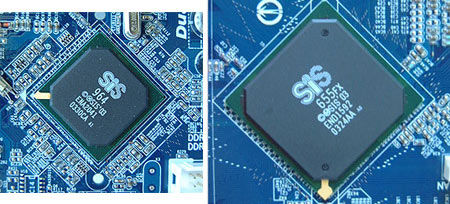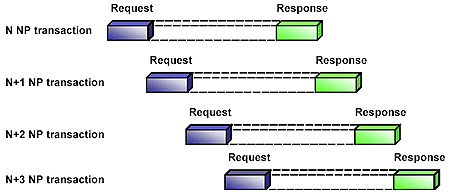Key Technologies of HyperStreaming
Single Stream with Low Latency describes
a situation where one or two streams of information between any given device and
SiS's 655FX chipset have been optimized for the lowest latency between the CPU
and its I/O devices.  These situations include;
CPU-to-VGA, CPU-to-HDD, and CPU-to-Memory for example. What that means is that data will have a lower
wait state between the chipsets, and depending on exactly what the processor is
trying to communicate with, one should expect fairly dramatic increases in performance.
These situations include;
CPU-to-VGA, CPU-to-HDD, and CPU-to-Memory for example. What that means is that data will have a lower
wait state between the chipsets, and depending on exactly what the processor is
trying to communicate with, one should expect fairly dramatic increases in performance.
When it comes to multitasking, SiS has implemented a
technology called Multiple Streams with Pipelining and Concurrent
Execution.
What that means is SiS has implemented a split transaction technique
for the 655FX chipset - basically they split transactions into two
independent sub transactions, one a request, and the other a response transaction.
When other transactions can use the free EU's in between, they do, thus
increasing overall efficiency.

The example above is intended to illustrate that
four independent request/respond transactions can be computed while a
conventional system would only be able to finish two.
To help keep things moving at a quick speed, SiS place six
request/response channels (three for each) between the 655FX Northbridge and the
964 Southbridge. That is a total of 1.2GB/s of bandwidth between the two
core logic chipsets. With traditional chipsets, there's only two channels (one
upstream and one downstream) and all data, no matter how trivial, is treated as
equal and passed through with the same priority.
With HyperStreaming, not only is the data being computed in
parallel, certain data streams receive higher priority, and
are thus worked on first and have more channels between the bridges.
For instance, HDD performance of the SiS964 is the highest we have ever
seen thanks to the fact
that hard drive streams have their own independent channels to the
Northbridge.
|
